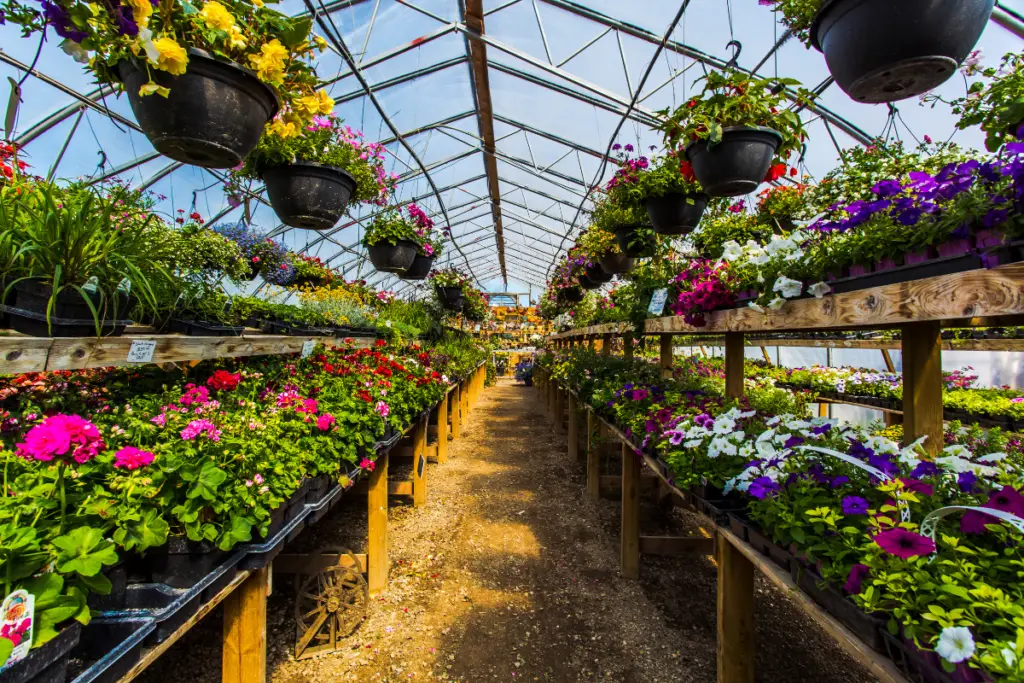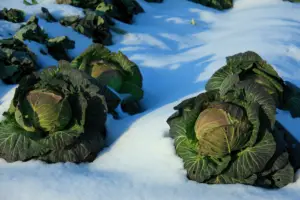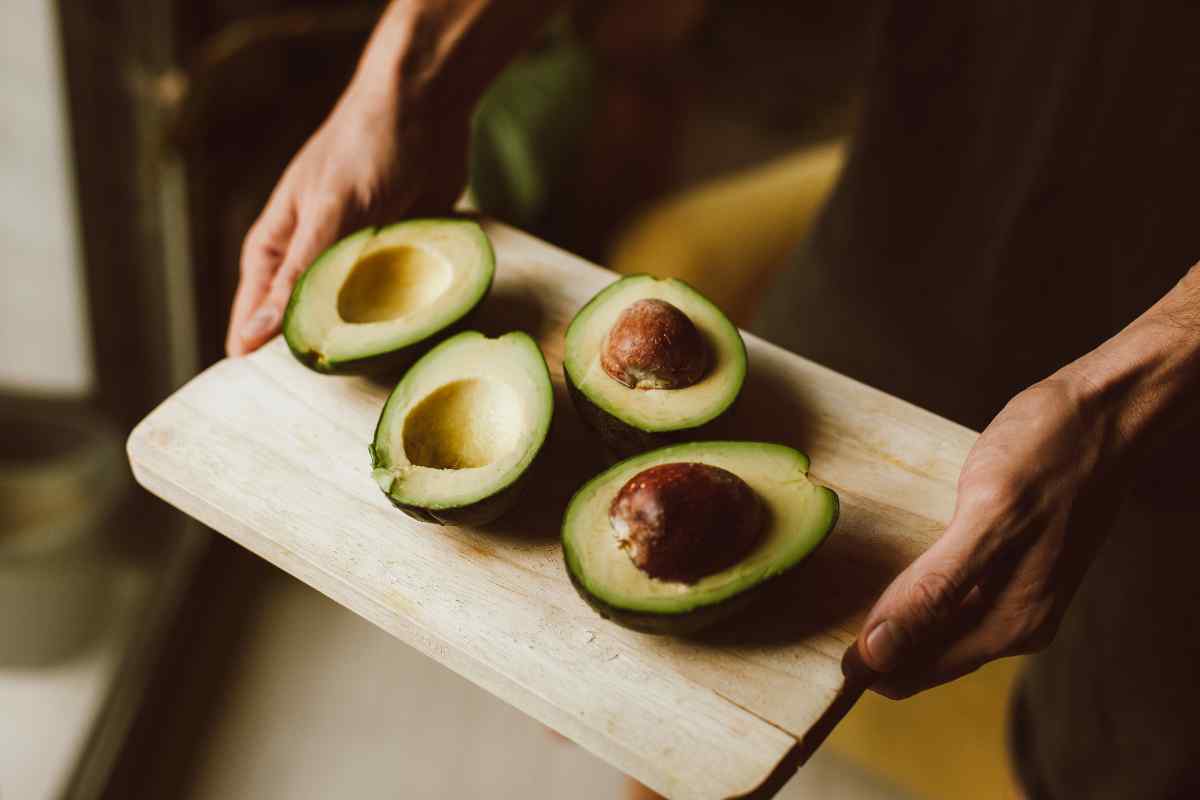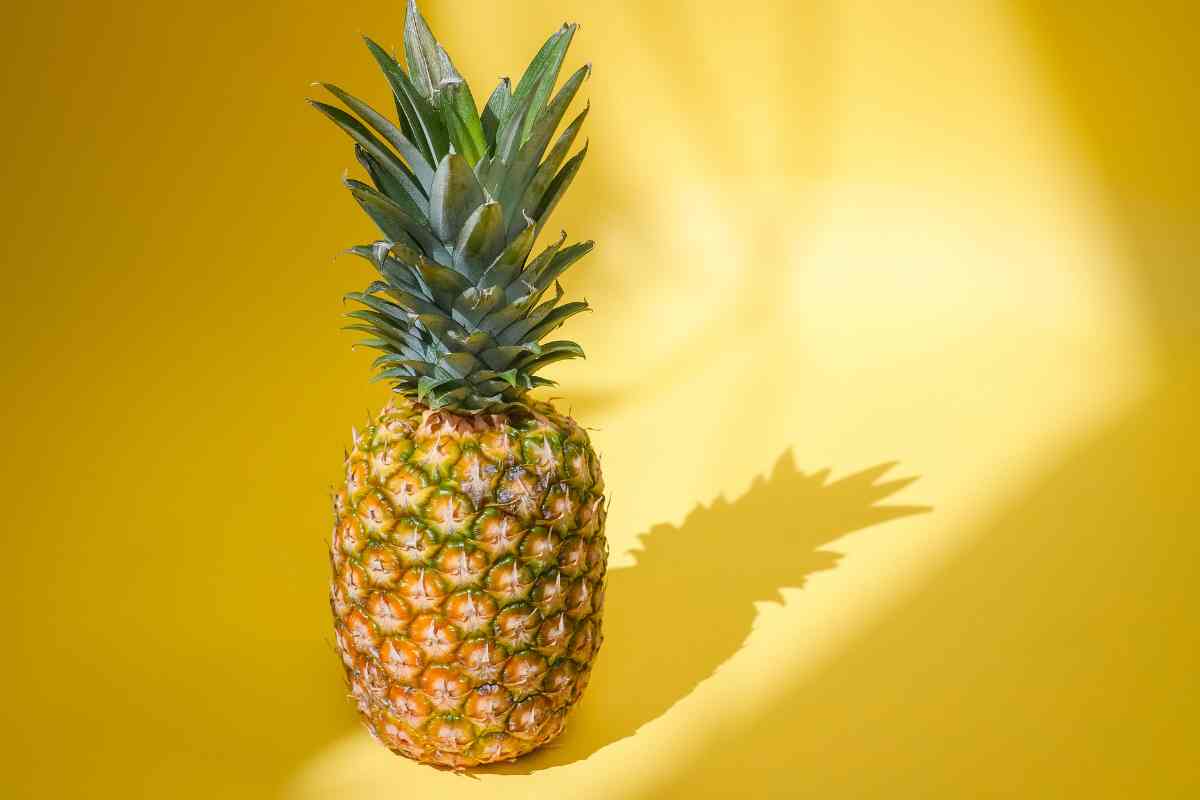A greenhouse provides a controlled environment for plants to grow in. It allows gardeners to extend the growing season and even grow plants all year round.
But what can you grow in a greenhouse all year round?
The answer depends on several factors, including the type of greenhouse, the climate, and the grower’s experience.
Generally, plants that thrive in warm and humid conditions are ideal for year-round greenhouse growing.
Some popular options include tomatoes, peppers, cucumbers, and herbs like basil and mint. These plants require consistent temperatures, ample sunlight, and proper ventilation to thrive.
It’s also important to consider the size of the greenhouse and the amount of space available.
Gardeners with limited space may want to focus on smaller plants like lettuce, spinach, and microgreens.
These plants grow quickly and can be harvested in as little as a few weeks. Additionally, some crops like carrots and beets can be grown in containers, making them ideal for compact greenhouses.
Overall, with the right conditions and careful planning, gardeners can grow a wide variety of plants in their greenhouse all year round.

Table of Contents
Understanding Greenhouses
Greenhouses are structures designed to grow plants in a controlled environment. They are typically made of glass or plastic and allow sunlight to enter while trapping heat inside.
This creates a warm and humid environment that is ideal for growing plants all year round.
Greenhouses come in different sizes and shapes, from small backyard structures to large commercial operations.
They can be heated or unheated, and can be equipped with various features such as fans, vents, and shade cloths to regulate temperature and humidity levels.
One of the main advantages of using a greenhouse is that it allows you to extend the growing season and grow plants that would not normally thrive in your climate.
For example, you can grow warm-weather crops like tomatoes and peppers in a greenhouse during the winter months, or grow cool-weather crops like lettuce and spinach during the summer months.
Another advantage of using a greenhouse is that it provides protection from pests and diseases.
Since the plants are grown in a controlled environment, they are less susceptible to damage from insects, fungi, and other pests.
However, there are also some challenges to using a greenhouse. Maintaining optimal temperature and humidity levels can be tricky, especially in extreme weather conditions.
You also need to be vigilant about watering and fertilizing your plants, as the controlled environment can lead to over or under watering.
Benefits of Year-Round Greenhouse Farming
Greenhouse farming has become increasingly popular among gardeners and farmers alike.
One of the main advantages of year-round greenhouse farming is the ability to grow crops all year long, regardless of the weather outside.
This means that farmers can produce crops during the off-season, which can help them to earn a higher income and reduce their dependence on seasonal crops.
Another benefit of greenhouse farming is that it allows farmers to control the environment in which their crops grow.
This means that they can adjust the temperature, humidity, and light levels to create the optimal growing conditions for their plants.
By doing so, farmers can increase crop production and grow more plants per square foot than they would be able to in an open field.
Greenhouses also offer protection from pests and diseases, which can help to reduce the need for pesticides and other chemicals.
This not only benefits the environment but also helps to create healthier, more nutritious crops.
In addition, greenhouse farming can help to minimize production risks.
By growing crops in a controlled environment, farmers can reduce the impact of weather-related problems such as droughts, floods, and frost.
This means that they are less likely to experience crop failures or other production problems, which can help to ensure a more stable income.
Essential Greenhouse Equipment
To grow plants in a greenhouse all year round, you need to have the right equipment.
Here are some essential items that every greenhouse owner should have:
Heating System
A heating system is essential to maintain the temperature inside the greenhouse. It is important to keep the temperature between 60-70°F during the day and 50-60°F at night.
A heating system can be powered by electricity, propane, natural gas, or wood. Electric heaters are the most common type of heating system, but they can be expensive to run.
Propane heaters are a good option for smaller greenhouses, while natural gas heaters are ideal for larger greenhouses.
Ventilation System
A ventilation system is crucial to regulate the temperature and humidity inside the greenhouse. It helps to prevent the buildup of excess heat and moisture, which can damage plants.
A ventilation system can be as simple as a few vents or as complex as an automated system that opens and closes based on temperature and humidity levels.
Lighting
A lighting system is necessary to provide plants with the light they need to grow. Natural light is the best option, but it may not be sufficient during the winter months.
Supplemental lighting can be used to provide plants with the necessary light. LED lights are the most energy-efficient and cost-effective option.
Watering System
A watering system is essential to ensure that plants receive the right amount of water. A drip irrigation system is the best option for greenhouse growing.
It delivers water directly to the roots, reducing the risk of fungal diseases and conserving water.
Growing Medium
A growing medium is the material in which plants grow. It should be light, porous, and well-draining.
Common growing mediums include peat moss, perlite, vermiculite, and coconut coir.
Planting Containers
Planting containers are necessary to hold the growing medium and provide support for the plants.
They can be made of plastic, clay, or other materials. It is important to choose the right size container for each plant.
Thermometer and Hygrometer
A thermometer and hygrometer are essential tools to monitor the temperature and humidity inside the greenhouse. They help to ensure that the environment is optimal for plant growth.
Temperature Control in a Greenhouse
Temperature control is a vital aspect of greenhouse gardening.
The temperature inside a greenhouse must be regulated to ensure that the plants receive the appropriate amount of heat and light throughout the year.
The ideal temperature inside a greenhouse will vary depending on the season and the plants being grown.
For most plants and vegetables, the ideal greenhouse temperature is 80°F (27°C). However, some plants, such as tomatoes, require higher temperatures to thrive.
It is important to monitor the temperature inside the greenhouse regularly.
A thermometer can be used to measure the temperature, and a thermostat can be installed to regulate the temperature automatically.
In addition to regulating the temperature, humidity levels must also be controlled.
The higher the temperature, the higher the humidity should be. Most plants require a relative humidity level of 50-70%.
To maintain the ideal temperature and humidity levels, greenhouse gardeners can use a combination of ventilation, heating, and cooling systems.
Ventilation can be achieved by opening windows and doors or by using fans. Heating can be provided by propane or natural gas heaters, electric heaters, or wood stoves.
Cooling can be achieved by installing shade cloth or by using evaporative cooling systems.
Year-Round Greenhouse Crops
Greenhouses provide a controlled environment that allows for year-round crop production. Some crops are better suited for greenhouse growing than others.
Here are some crops that can be grown in a greenhouse all year round:
Leafy Greens
Leafy greens such as lettuce, spinach, and kale are perfect for greenhouse growing. They thrive in cool temperatures and can be harvested continuously throughout the year.
These crops are also easy to grow and require minimal maintenance.
Herbs
Herbs such as basil, parsley, and cilantro can be grown in a greenhouse all year round. These crops prefer warm temperatures and plenty of sunlight.
They are also easy to grow and can be harvested continuously throughout the year.
Tomatoes
Tomatoes are a popular greenhouse crop. They require warm temperatures and plenty of sunlight to thrive. With proper care, tomatoes can be grown in a greenhouse all year round.
They are also high-yielding and can provide a steady supply of fresh produce.
Cucumbers
Cucumbers are another popular greenhouse crop. They require warm temperatures and plenty of sunlight to thrive. With proper care, cucumbers can be grown in a greenhouse all year round.
They are also high-yielding and can provide a steady supply of fresh produce.
Peppers
Peppers are a versatile greenhouse crop. They require warm temperatures and plenty of sunlight to thrive. With proper care, peppers can be grown in a greenhouse all year round.
They are also high-yielding and can provide a steady supply of fresh produce.
Overall, there are many crops that can be grown in a greenhouse all year round. Leafy greens, herbs, tomatoes, cucumbers, and peppers are just a few examples. With proper care and maintenance, these crops can provide a steady supply of fresh produce throughout the year.
Leafy Greens
Greenhouses are great for growing leafy greens all year round. They are versatile and easy to grow, making them the perfect addition to any greenhouse.
Here are some of the best leafy greens to grow in a greenhouse:
Lettuce
Lettuce is a staple in any salad and is one of the easiest greens to grow in a greenhouse.
There are many varieties of lettuce to choose from, including butterhead, romaine, and loose-leaf lettuce.
Butterhead lettuce, also known as Boston or Bibb lettuce, has a soft texture and a sweet flavor.
Romaine lettuce is crisp and has a slightly bitter taste. Loose-leaf lettuce is tender and has a mild flavor.
Lettuce grows best in cool temperatures, between 60-70°F (15-21°C). It also needs plenty of sunlight, so make sure to place it in a spot with good exposure to sunlight.
Lettuce can be grown in containers or in the ground, and it is important to keep the soil moist but not waterlogged.
Spinach
Spinach is another great leafy green to grow in a greenhouse. It is packed with vitamins and minerals and can be used in a variety of dishes.
Spinach grows best in cool temperatures, between 50-70°F (10-21°C), and can be grown in containers or in the ground.
There are many varieties of spinach to choose from, including savoy, semi-savoy, and flat-leaf spinach.
Savoy spinach has crinkled leaves and a slightly bitter taste. Semi-savoy spinach has less crinkled leaves and a milder flavor. Flat-leaf spinach has smooth leaves and a sweet taste.
Kale
Kale is a nutrient-rich leafy green that is perfect for growing in a greenhouse. It is packed with vitamins A, C, and K, as well as calcium and iron.
Kale grows best in cool temperatures, between 60-70°F (15-21°C), and can be grown in containers or in the ground.
There are many varieties of kale to choose from, including curly kale, Tuscan kale, and Russian kale.
Curly kale has tightly curled leaves and a slightly bitter taste.
Tuscan kale, also known as Lacinato or dinosaur kale, has long, narrow leaves and a sweet taste.
Russian kale has frilly leaves and a mild flavor.
In conclusion, growing leafy greens in a greenhouse is a great way to have fresh produce all year round. Lettuce, spinach, and kale are just a few of the many leafy greens that can be grown in a greenhouse with ease. With proper care and attention, anyone can enjoy a bountiful harvest of leafy greens from their greenhouse.
Herbs
Growing herbs in a greenhouse is an excellent way to have fresh herbs all year round.
Most herbs are easy to grow and require minimal maintenance. They also add a delightful aroma to the greenhouse.
Here are some of the best herbs to grow in a greenhouse all year round:
Basil
Basil is a popular herb that can be grown all year round in a greenhouse. It is easy to grow and requires minimal maintenance.
Basil prefers warm temperatures and needs plenty of light. The best way to grow basil is in a pot or container. It is also important to keep the soil moist but not too wet.
Parsley
Parsley is another herb that can be grown all year round in a greenhouse. It is a versatile herb that can be used in many dishes.
Parsley grows best in a pot or container and needs plenty of light. It also requires well-drained soil and needs to be watered regularly.
Dill
Dill is a herb that can be grown all year round in a greenhouse. It is a popular herb that is used in many dishes.
Dill prefers cooler temperatures and needs plenty of light. It is also important to keep the soil moist but not too wet. Dill can be grown in a pot or container and requires minimal maintenance.
In conclusion, growing herbs in a greenhouse is a great way to have fresh herbs all year round. Basil, parsley, and dill are some of the best herbs to grow in a greenhouse. They are easy to grow, require minimal maintenance, and add a delightful aroma to the greenhouse.
Fruits and Vegetables
Greenhouses are perfect for growing fruits and vegetables all year round.
With the right conditions, you can grow a variety of produce that would otherwise be difficult to cultivate in colder climates.
Here are some of the best fruits and vegetables to grow in a greenhouse:
Tomatoes
Tomatoes are one of the most popular greenhouse crops. They require plenty of sunlight and warmth, making them ideal for greenhouse growing.
You can grow both indeterminate and determinate varieties, depending on the size of your greenhouse.
Indeterminate tomatoes will continue to grow and produce fruit throughout the season, while determinate varieties will produce a set amount of fruit and then stop growing.
To grow tomatoes in a greenhouse, you will need to provide them with plenty of water, nutrients, and support.
You can use trellises, stakes, or cages to keep the plants upright and prevent them from bending or breaking under the weight of the fruit.
Cucumbers
Cucumbers are another popular greenhouse crop. They require warm temperatures and plenty of sunlight to grow, making them perfect for greenhouse cultivation.
You can grow both slicing and pickling cucumbers, depending on your preference.
To grow cucumbers in a greenhouse, you will need to provide them with plenty of water and nutrients.
You can use trellises or stakes to keep the plants upright and prevent them from bending or breaking under the weight of the fruit.
Cucumbers can be prone to powdery mildew, so it’s important to keep the greenhouse well-ventilated and avoid overcrowding the plants.
Peppers
Peppers are a great crop to grow in a greenhouse because they require warm temperatures and plenty of sunlight.
You can grow both sweet and hot peppers, depending on your preference.
To grow peppers in a greenhouse, you will need to provide them with plenty of water and nutrients.
You can use stakes or cages to keep the plants upright and prevent them from bending or breaking under the weight of the fruit.
Peppers can be prone to aphids and other pests, so it’s important to monitor the plants regularly and take action if you notice any signs of infestation.
Overall, greenhouses are a great way to grow fruits and vegetables all year round. With the right conditions and care, you can enjoy a bountiful harvest of fresh produce, even in the middle of winter.
Managing Pests and Diseases
Greenhouses can be a breeding ground for pests and diseases due to the controlled environment and high humidity.
Therefore, it is crucial to manage pests and diseases to ensure the health and productivity of the plants.
Here are some tips for managing pests and diseases in a greenhouse:
1. Maintain Cleanliness
Maintaining cleanliness is essential to prevent pests and diseases from spreading.
Regularly clean the greenhouse, including all surfaces, tools, and equipment.
Remove any dead plant material and weeds as they can harbor pests and diseases.
2. Monitor the Plants
Regularly monitor the plants for any signs of pests and diseases. Early detection is crucial to prevent the spread of pests and diseases.
Inspect the plants regularly for any discoloration, wilting, or unusual growth. Use sticky traps to monitor flying pests such as whiteflies, thrips, and fungus gnats.
3. Use Biological Controls
Biological controls are a safe and effective way to manage pests and diseases in a greenhouse.
Predatory insects such as ladybugs, lacewings, and predatory mites can help control pests such as aphids, spider mites, and thrips.
Trichoderma fungi can help control soil-borne diseases such as Pythium and Rhizoctonia.
4. Use Chemical Controls
Chemical controls should be used as a last resort and only when necessary. Always follow the label instructions when using pesticides.
Rotate between different pesticides to prevent pests from developing resistance.
Growers of greenhouse vegetables and greens can use the guide “Recommended Insecticides for Common Greenhouse Pests on Vegetables, Herbs, and Leafy Greens” when considering an insecticide application.
5. Preventative Measures
Preventative measures can help reduce the risk of pests and diseases in a greenhouse. Use disease-resistant varieties of plants when possible.
Quarantine new plants for a few weeks before introducing them into the greenhouse.
Use proper ventilation and air circulation to reduce humidity levels and prevent the spread of diseases.
By following these tips, growers can effectively manage pests and diseases in a greenhouse and maintain healthy and productive plants.
Harvesting and Storage
One of the benefits of growing in a greenhouse all year round is the ability to harvest fresh produce whenever you need it.
However, it’s important to know when to harvest each crop for the best flavor and nutritional value.
For example, leafy greens like lettuce and spinach should be harvested when they reach a mature size but before they start to bolt.
Tomatoes should be picked when they are fully ripe but still firm, while cucumbers should be harvested when they are about 6-8 inches long.
Once you’ve harvested your produce, it’s important to store it properly to ensure it stays fresh for as long as possible.
Some crops, like root vegetables and winter squash, can be stored for several months in a cool, dry place.
Others, like tomatoes and peppers, should be stored at room temperature and used within a week or two.
If you have an abundance of produce, you may want to consider preserving it for later use.
Canning, freezing, and dehydrating are all great ways to extend the shelf life of your harvest.
Here are some tips for storing and preserving common greenhouse crops:
- Leafy greens: Rinse in cold water and spin dry. Store in a plastic bag with a damp paper towel to help retain moisture.
- Tomatoes: Store at room temperature out of direct sunlight. If they are not fully ripe, place them in a paper bag to ripen.
- Cucumbers: Store in the refrigerator for up to a week.
- Root vegetables: Store in a cool, dry place like a root cellar or basement.
- Winter squash: Store in a cool, dry place for up to six months.
- Peppers: Store at room temperature for up to a week.
- Berries: Rinse in cold water and spread out on a paper towel to dry. Store in the refrigerator for up to a week or freeze for later use.
By following these guidelines, you can enjoy fresh, homegrown produce all year round and make the most of your greenhouse harvest.
Conclusion
In conclusion, a greenhouse can be a great way to grow fresh produce all year round. With the right plants and proper care, you can enjoy a bountiful harvest even in the depths of winter.
Some of the best plants to grow in a greenhouse all year round include cold-hardy crops like lettuce, kale, spinach, and broccoli.
These plants can thrive in cooler temperatures and are perfect for winter gardening.
In addition to these cold-hardy crops, there are plenty of other plants that can be grown in a greenhouse, including tomatoes, peppers, cucumbers, and herbs.
By carefully selecting your plants and providing them with the right environment, you can enjoy fresh produce throughout the year.
It’s important to remember that growing in a greenhouse requires some extra effort and attention.
You’ll need to monitor the temperature, humidity, and light levels to ensure that your plants are thriving.
You may also need to provide supplemental heat or lighting during the winter months.
- How to Dry Basil Leaves: A Professional Guide
- Is an Avocado a Fruit or Vegetable? Simple Answer and Explanation
- Does Pineapple Have Seeds? Exploring the Anatomy of Pineapples
- Blooming Through Winter: Can I Grow Vegetables Indoors in the Winter?
- What Can You Grow in a Greenhouse All Year Round: A Guide to Year-Round Greenhouse Gardening
- Are Blueberries Blue? Debunking the Myth of Their Color
















